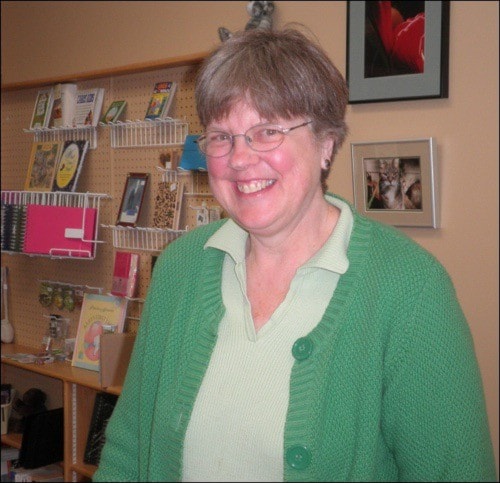Kettle Valley Food Co-op consumer member Sandra Einarson has an earnest look when she talks about the food co-op’s potential.
For her, it’s not just part of a reliable food supply, but also encouragement for young farmers looking to build a life on the land.
It comforts her to know the co-op works to support local producers, while the damages caused by unlabeled genetically modified organism (GMO) ingredients, hormones, antibiotics and excessive processing in the current system come to light.
Einarson’s early years were spent on a farm in Alberta and later, as a new teacher, she met and married Bill Wilby in Alert Bay, population 1,200.
They continued small-town living in Anahim Lake and Christina Lake before arriving in Grand Forks.
For both, small really is beautiful. Einarson values the area’s natural generosity, recalling how, 20 years ago, George Ritco used to pop unannounced into their struggling photography business, trailing armloads of fresh produce for them. That whetted her appetite for better quality food from the health food store, the farmers’ market and eventually, when the distribution centre set up in the back of their building, the co-op.
It was no accident that she and Wilby opened a second-hand book and specialty bike store in their old Contact Photo building on Market Avenue recently.
She’s an avid reader, after all – one becoming increasingly adamant about protecting our “food shed” after reading books like Joel Saladin’s Folks: This Ain’t Normal: A Farmer’s Advice for Happier Hens, Healthier People and a Better World. His ideas informed Einarson’s firm belief that nothing short of a full re-ordering of the local food system is required.
A sunny smile warms her face when she talks about the way locally-produced meat tastes compared to imported factory farmed fare.
She fondly remembers tentatively serving a hot dog from North Fork Pork to her aging mother to rave reviews. After all, “The best hot dog I’ve eaten in my entire life,” is no mean claim from a 92-year-old woman.
Family trips out to Ritco’s farm may have seeded an interest in food and farming in their daughter Ann too.
She’s studying agriculture and food systems at UBC now, freely discussing her latest thoughts on food security with her mother.
From that perspective, Einarson can see that people living here are sitting pretty: they actually care about good quality food, and are willing to share it.
– Contributed by Jan Westlund
